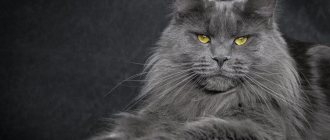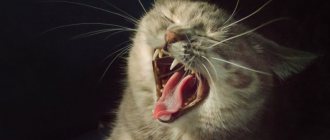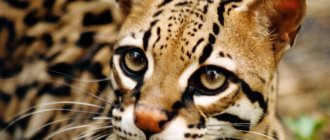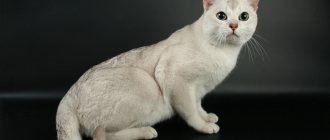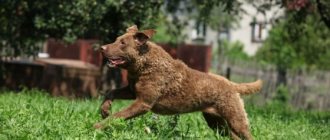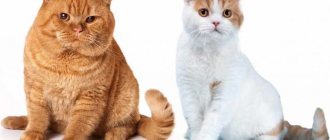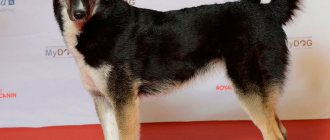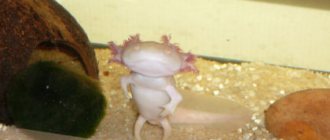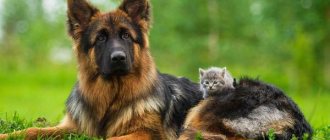Lizards 08/07/20204299 views
So, you finally decided to have a real reptile at home and the choice was made in favor of the spotted leopard gecko. Of course, at first glance it may seem that keeping a leopard gecko is not so easy, but first of all we need to remember that we are responsible for any living creature that we take into our home. The leopard gecko will certainly become everyone's favorite for a long time, because the life expectancy is 13-20 years, but there are cases when these reptiles lived up to 30! Leopard geckos are very neat animals, you don’t need to collect “surprises” from all over the terrarium, they choose a specific place and will always go “to the toilet” there, so cleaning them is a pleasure. There is no smell from these reptiles, they do not cause allergies. Some individuals become so attached to a person that they literally ask to be held. In the evening, after a long day, approaching the terrarium, it is impossible not to smile when you see a pretty face that looks hopefully straight into your eyes. They are so positive, these cute leopard geckos. You can list a lot of positive qualities of these amazing creatures, but the choice is yours. Let's get acquainted, we present to your attention Eublepharis Macularius!
Kit for spotted leopard gecko “Minimum”
Maintenance and breeding
The East Indian leopard gecko is still quite a rare animal among our pets. But nevertheless, it can be successfully kept and propagated in captivity. Its maintenance and breeding is not too difficult for a novice hobbyist.
Setting up a terrarium for the Indian leopard gecko
The East Indian leopard gecko is kept and bred in terrariums with an area of at least 0.2 m². those. length and width should be from 50x40 cm. Height from 45 cm. Such a terrarium is suitable for breeding East Indian leopard geckos, in which 3-4 females can be planted for 1 male. During other periods, animals are kept separately.
You can put paper napkins or a layer of clay at the bottom of the terrarium. For decoration, you can use stone shelters and bamboo sticks. A humid chamber, a bowl for water and for calcium are required. It should be noted that some leopard geckos prefer not to drink from bowls, but to lick the droplets of water that form when spraying the terrarium or those droplets that fall on their heads.
Temperature:
- during the day - 25-26° - no more than 28°!
- night — 22-23°
Humidity - 70-80% (can be sprayed with water 3 times a day if your air is very dry)
Keeping East Indian leopard geckos
Adult animals receive 4 to 6 crickets every other day. Once a week you can give Turkmen cockroaches. Pregnant females and after laying are given mice, one per week.
Vitamin supplements are given along with crickets during feeding. In addition, a bowl with mineral supplements - calcium powder - should always be in the terrarium. It can also be given during feeding along with crickets.
Wintering takes about 75 days, usually lasting from January to February. The temperature is lowered to 16-18°. Humidity remains at 70-80%. For wintering, a quiet place not illuminated by bright light is necessary. Be sure to have water and a wet chamber. At the beginning of the hibernation period and after its end, the temperature gradually decreases, and then rises just as smoothly. This takes approximately 14 days, i.e. we lower the temperature for 7 days, then the wintering temperature, and then a week before release we begin to gradually increase the temperature to the temperature regime of the active period.
Reproduction of leopard geckos
Eublepharis hardwickii become sexually mature at 12-18 months of age. During the breeding season, East Indian leopard geckos require 14 hours of daylight and high humidity. Don't forget about a humid chamber with damp sphagnum moss or coconut fibers. For reproduction, a male and 1-3 females are taken in one terrarium.
Pregnancy lasts 19-20 days. During the season, the female lays several clutches of 1-2 eggs with an interval of 19-20 days. The eggs are leathery, approximately 20 x 10 mm in size, and the female buries them in the ground. You need to make sure that there is enough soil so that the female can bury them.
To obtain females, the incubation temperature is set to about 28º. For males to hatch, it is necessary to maintain a higher temperature of +32ºС. Humidity must be maintained at 70-80%. The substrate in the incubator is sphagnum or vermiculite.
The emerging young Eublepharis hardwickii are placed in cages made of plastic boxes, in which they can be kept together for 3 months. It is desirable that the living space for one young leopard gecko be at least 0.135 m². Young animals live well on paper towels, as do adults. To maintain humidity, you can spray the container with a spray bottle 2-3 times a day. They feed on crickets and cockroaches. It is necessary to choose the size of food so that babies can swallow it easily. Calcium should be given with each feeding.
Calcium is very important, especially during the breeding season and raising young animals. So make sure your leopard geckos always have a bowl of it available. If you notice signs of rickets, in addition to calcium, you need to install a lamp with ultraviolet light (280 nm) for better absorption of calcium. It is necessary to irradiate for 2 minutes once every two days. And for treatment, liquid calcium gluconate is taken, which is instilled into the lizard’s mouth, 2-3 drops every other day until complete recovery.
External features
It should be noted that the appearance of the spotted leopard gecko may differ significantly from its counterparts living in natural conditions. This is due to the fact that in nature this gecko lives in deserts, and the domesticated spotted leopard gecko is the result of selection. But this is one of those rare cases when human intervention was beneficial: it was possible to achieve a more saturated bright color compared to the natural one.
Today there are about a hundred different color variations - from very light to very dark. An indispensable condition is the presence of dark rings on the tail and spots on the body. It is for the spots that the gecko got its name - leopard. In addition, he drinks water like a cat, lapping it with his tongue. The eyes of the spotted leopard gecko are also similar to those of a cat - they are slightly convex and elongated.
These are quite large lizards - the average length of an adult individual is from 20 to 25 cm, but sometimes representatives up to 30 cm are found. The head is triangular in shape, the paws are small with five fingers. The tail is massive. During periods of drought, the spotted toothfish accumulates the necessary liquid in it. Like most lizards, when in danger, it can shed its tail, which grows back over time, but is no longer as massive as before.
Adult leopard geckos measure 158 mm. (from nose to anus). However, hobbyists often measure their pets entirely, from nose to tip of tail. If measured this way, some animals can reach sizes up to 28 cm in length.
On average, the size (with tail) and weight of leopard geckos is as follows:
- Males are 20-28 cm. Weight is 60-80 g.
- Females are 18-20 cm. Weight is 50-70 g.
- Newborn leopard geckos have a size of 7-10 cm and 2-5 g. weight
Color pattern
The dorsum of an adult Eublepharis macularius is straw yellow to light grey-violet, often with hints of pink. On the dorsal part there are blue-black spots, in some cases separate and sparse, and in others they can merge into a mesh, which is located in place of the dark stripes of the juvenile coloring of the leopard gecko.
The back of newborn leopard geckos is dark (brown to black). Two or three yellow stripes run across the body. The post-neck stripe is white, running from the neck, through the ear openings to the lip area.
Currently, leopard gecko breeders have developed a huge number of color variations - the leopard gecko morph. The same “wild” coloration that is described here is called “Normal”, which indicates the natural color scheme of this animal. Natural coloring may also be subject to some variations.
We suggest you read: Koi carp - photos, keeping and breeding in an aquarium
The dorsal tubercles of Eublepharis macularius are widely spaced, clearly defined, and pointed. The tubercles on the medial side of the dorsum are usually larger in size compared to the intertubercular space. The chin scutes are usually adjacent to the first lower labial scutes.
The abdominal scales are round in shape, located in 21-30 rows along the middle of the body. Each caudal whorl (whorl) contains 3 transverse rows of ventral scales. The scales on the tail from the dorsal part are rounded and slightly convex. The eyelids consist of 46-57 bordering scales.
The elements of the dorsal pattern are not arranged linearly. There are several separate tubercles on the subdigital lamellae. The end finger lamellas are bifurcated. The height of the ear canal is equal to 11/2 of the internostril distance.
Spotted leopard gecko at home. Maintenance, breeding and care
The terrarium contains one leopard gecko or a family of a male and 2-5 females. The number of females per male can be increased to 20, but it is better to keep them in separate groups of 5-6 individuals. You cannot house several males together in a small area. They will share space and fight. You cannot have only a pair of a male and a female, since the males are too active, the female will not withstand such pressure and will not live long.
To keep a spotted leopard gecko you need:
- a terrarium with the required number of shelter houses;
- soil at the bottom of the terrarium;
- background temperature 27-30 °C;
- air humidity 40–50%;
- insects kept as food;
- vitamin and mineral supplements;
- container with water (drinker);
- wet compartment (closed chamber with damp moss or coconut) for molting.
Researchers at the Tula Zoo have experimentally proven that for the health and longevity of leopard geckos, the following conditions of detention are mandatory and sufficient:
- In a horizontal terrarium with dimensions of 60x30x20 and a volume of 36 liters they contain a family of 6 individuals (1 male and 5 females).
- Instead of soil, use newsprint or paper towels. The paper is changed daily - this is hygienic and allows you to monitor the health of the leopard gecko.
- A plastic box with a round top entrance 45x12x5 cm is suitable as a shelter. A layer (2-3 cm) of coarse-grained vermiculite, which is not a favorable environment for insects, is placed inside.
- Daily spraying ensures a humidity level of 40-50%.
- Heating using heating coils is carried out locally: under the bottom on one side of the terrarium. During the day, in a warm corner the temperature rises to 35°C, in a cold corner - to 24°C. In summer, the spirals are turned off, then the temperature drops to 20-23°C. For the maturation of germ cells, reptiles need wintering. Under artificial conditions, the temperature is lowered to 15°C for 2-4 weeks. Air conditioning is provided all year round.
- Young lizards are irradiated with ultraviolet light from a distance of 50 cm 2-3 times a week, adults once. The duration of one session is 5 minutes. In summer, artificial irradiation is replaced with walks in the fresh air lasting 30 minutes.
- The water in the drinking bowl is replaced with clean water once every 1-2 days.
Females lay eggs inside the shelter in vermiculite. This soil is better than sand. It does not damage the egg shells. But you can't leave eggs there. During subsequent laying, the female can dig them up and eat them. The eggs are kept in an incubator, the temperature being adjusted to produce animals of the desired sex. 2-3 days before hatching, the clutches are well sprayed with water. Then the leathery shell softens, which makes it easier for the cubs to come out.
Young leopard geckos may not eat during the first week; they begin to eat a couple of days after the first molt. When the baby eats his own shed skin, his digestive organs will begin to work. This can be judged by the excrement they left behind. Then the work of his gastrointestinal tract will begin.
Photo by: J. Polák, CC0
Moving
At the time of purchasing a gecko, ask its previous owner about the conditions for keeping the leopard gecko at home - age and gender, time and frequency of feeding, behavioral characteristics of this individual, how molting proceeds, what they fed and what vitamin and mineral supplements your leopard gecko received. Moving is stressful for an animal, so provide it with maximum rest in the first 2-3 days, and then the leopard gecko will quickly acclimatize and get used to the new home, new smells and new owner.
Keeping leopard geckos in a terrarium
Leopard geckos can be kept alone or in pairs. Under no circumstances should several males be placed in one terrarium - fights in this case are simply inevitable. Leopard geckos can fight for territory until one of their competitors is killed. The lizards themselves are not aggressive, but they are extremely territorial and do not tolerate strangers. If you want to keep more than one gecko, it is better to purchase one male and several females. Since males are overly loving, it is recommended to place not one girlfriend with the gecko, but at least two. He will constantly terrorize his one and only “wife” with his advances. By the way, when certain conditions are created, leopard geckos reproduce relatively easily in captivity.
For one individual, a terrarium measuring 40x40x40 cm is sufficient, for a pair - 60x40x40 cm, and for a group of three to seven lizards - 100x40x40 cm. Since leopard geckos lead a mainly terrestrial lifestyle, the height of the terrarium may even be slightly lower - 35 cm.
It is recommended to use a glass terrarium rather than a plastic one, since the leopard will scratch it with its claws and over time the plastic will become dull. The terrarium should be well ventilated with tightly closing doors.
The temperature must be maintained at 27-31° C., and in the coldest corner of the terrarium the temperature should be about 24° C.
Heating devices can be either an infrared lamp, a heating cord or a stone, although the option with a heating lamp is more preferable.
Humidity in a room with a lizard can range from 40 to 55%. This is achieved by spraying or placing a drinking bowl in the terrarium that has a large bottom area. During molting of lizards, the humidity must be increased. To do this, just put a wet rag folded 2-3 times into the terrarium. Animals sometimes lie on it to soak their old skin.
Lighting is of great importance when keeping spotted leopard geckos. Be sure to install an ultraviolet lamp (for example, Hagen “Repti Glo 5.0”).
Since the leopard gecko is a nocturnal species of gecko, it will need shelter during the day. Well-fixed pieces of bark, stones, and bamboo tubes are suitable as such. A humidity chamber can also serve as a shelter - for example, a ceramic pot with a lid or a food container in the wall of which you need to drill a hole for your lizard.
The leopard gecko's house can be decorated with live plants - they will also help maintain humidity.
The choice of soil should also be taken seriously - sand is not suitable for this purpose, since dust, getting in with the sand, can cause complications in the respiratory and digestive system of the lizard. Fine gravel is also not suitable - leopard geckos constantly swallow small pebbles. You need to use pebbles of such a size that the gecko cannot swallow them. You can also lay a plastic mat simulating grass at the bottom of the terrarium.
Place at least one large stone and, if possible, driftwood in the terrarium. At night, lizards gather to warm themselves on a stone heated during the daytime, and rub against snags during molting. Leave the snag with bark, since leopard geckos have straight fingers with claws without wide plates, which do not allow them to climb on slippery surfaces. To disinfect and disinfestate, scald the snag with boiling water and treat with a solution of potassium permanganate. If there is not enough heat, the geckos will climb onto the driftwood closer to the light bulb.
Leopard geckos are clean animals; they choose one of the corners of the terrarium for the toilet and will go there constantly, which, of course, makes life easier for the terrarium owner. For cleaning, it is enough to replace the dirty stones in this place with new ones.
Leopard gecko molt
If you are having problems with shedding, first, help your pet get rid of the remaining old skin by wetting the areas with warm water and gently rubbing with your finger or a cotton swab. Most often, the toes, tail and area under the tail remain unfinished. Watch your pets - if you do not remove the skin from the fingers, this can lead to the loss of not only the claws, but also the phalanges of the fingers.
Secondly, we check the wet chamber - it should always be wet! If everything is in order with the conditions of detention, then it is worth thinking about the quantity or quality of vitamin and mineral supplements. Molting problems can be caused not only by their lack, but also by their excess.
How to make a wet chamber for a leopard gecko with your own hands? Very simple. We take a plastic container with a lid, cut or melt a hole for entry, and put pre-soaked and lightly squeezed sphagnum moss on the bottom. All. We will discuss options for wet chambers with you.
How to care for a leopard gecko?
It is important not only to properly build a house for a reptile, but also to carry out daily care. It is necessary to properly care for the terrarium and keep it clean
At home, the leopard gecko chooses one place in the corner to relieve itself, so cleaning should not be a problem. Nutrition is of great importance and must meet existing requirements.
What to feed your leopard gecko?
A favorite food for reptiles are crickets, which are available in pet stores, but you can breed them yourself. Another option is the Turkmen cockroach. Leopard geckos' diet may include Madagascar cockroach larvae and mealworms. Before giving your pet insects, it is recommended to feed him various greens. Leopard geckos do not eat fruits, vegetables and other plant products. When feeding, keep in mind a few rules:
It is best to give food by hand or using tweezers. There should always be a drinking bowl with water in the terrarium and it needs to be updated once a day
It is important that the container has low edges. Individuals older than one year should receive food 2-3 times a week. A leopard gecko can eat up to five crickets at a time
Up to a month, the lizard is given a test 1-2 times a day, and at the age of 1-3 months. give two insects once a day. The older the pet, the less often it is fed.
Breeding leopard geckos
If you want to get offspring from your lizards, it is recommended to use an additional terrarium, in which you need to place the female for several days, since this will stimulate the mating season. After five days, she can be returned to the male, and if he is ready for the process, he will begin to vibrate his tail and click. During the mating season, the “man” will bite his chosen one.
Pregnancy in leopard geckos lasts approximately 1.5 months. When the female is ready to lay eggs, she will dig a hole in the terrarium
It is important to place a closed container filled with damp soil or coconut shavings (5 cm high) in the corner. Make a hole on one side so the female can enter and lay eggs.
The duration of the incubation period is 45-70 days. During the season, the female lays no more than four pairs of eggs, about every three weeks.
Diseases of leopard geckos
With proper care of reptiles, I rarely get sick, but there is a list of diseases that can occur in such lizards
Pay attention to the behavior and condition of your pet in order to determine the presence of a disease in time and visit a veterinarian
- The spotted leopard gecko may suffer from rickets, which is characterized by curvature of the paws, and at the next stage the shape of the spine changes. With this disease, coordination of movements is impaired and convulsions are observed.
- Cryptosporidiosis infection is dangerous and practically incurable. It is characterized by the following symptoms: a skinny tail, a black spot on the chest, indicating an enlarged liver, and watery spots, indicating the accumulation of a large amount of fluid in the abdominal cavity.
- Leopard geckos may suffer from parasites that affect lizards because they eat living things. To avoid this, carry out prevention using the drug “ReptiLife” or “Profender”.
Leopard gecko molt
The appearance of cracks, peeling and discoloration of the skin to white on the body indicates that molting is beginning. It is recommended to then install a wet chamber in the terrarium, for example a closed container with a small entrance and a moist substrate. At home, the spotted leopard gecko sheds its skin once every 1-2 months, and in small ones once every 2 weeks. Don't worry if the lizard ate the shed skin, this is normal.
It is important to carefully examine the reptile during this period so that no old skin remains, and if necessary, carefully remove the remains yourself
Vitamins for leopard geckos
The most popular supplement for insectivorous reptiles is REPASHY Calcium Plus. It is a mixture of calcium, vitamins, proteins, fats, fiber and other important substances. When adding this complex, you do not need to use any other additives. REPASHY helps to increase the nutritional value of insects, and the reptile receives all the substances necessary for health. Leopard geckos must eat the supplement every day. You need to put the insects in a bag, add the powder and shake everything well, and only then give the reptile food.
The nuances of keeping a spotted leopard gecko
The spotted leopard gecko (Eublepharis macularius) is a fairly large lizard that belongs to the Gecko family (Gekkonidae) and the genus Eublepharis. But some sources say that this spotted animal belongs to the Eublepharidae family of the same name (Latin: Eublepharidae).
In its natural habitat, this beautiful lizard can be found in areas that are almost devoid of any vegetation - these are rocky mountain slopes, zones of dry or semi-dry steppe. This exotic species considers Southern Iran, Iraq, India, Turkmenistan, Pakistan, Afghanistan to be its homeland; it can also be found in the lands of East or South-West Asia.
If we talk about the appearance of this original gecko, then the description should begin with the parameters of the body. The length of the male’s beautiful body together with the tail is approximately 27–30 cm, while the females are more miniature in size.
The skin is covered with scales, the morphology of which tends to change depending on its location.
The limbs of the leopard lizard are of medium length: the front ones are longer than the back ones. The scales on the front legs of the leopard gecko are uniformly flat; in the projection of the forearm there are so-called scaly projections, which are similar in appearance to the dorsal tubercles of geckos. As for the hind legs, almost their entire surface is covered with conical tubercles of varying sizes.
The muzzle of the spotted leopard gecko is covered with flat, fairly large scales. In its structure, it is polygonal, completely heterogeneous, and tends to decrease, reaching the eye area. If you look closely at the upper eyelid of this animal, you can see several eyelash-like outgrowths. The scutes of the lips smoothly decrease backwards, only the scutes of the upper lip are smaller compared to the lower labial scutes.
The scaly covering of the back of this leopard reptile is relatively small and has a rounded polygonal shape. Almost always reduces its size, reaching the sides, with the help of this the border between the dorsal and ventral scales is clearly visualized. The tubercles located on the back of the lizard have a conical, less often spherical shape. The abdominal scales are large.
The tail is approximately three times shorter than the body of the leopard gecko, has a characteristic swelling in the middle and a sharp end. The cover of the tail is represented by small rectangular-rounded scales; small tubercles with a conical or spherical shape are neatly placed between them; the tubercles do not tend to come into contact with each other.
Like many other lizards, the leopard gecko can lose its tail appendage, and in its place a new one grows, only smaller and less beautiful. A regenerated tail, covered with rectangular-oval scales arranged in relatively regular rows, but the caudal tubercles are not observed.
A distinctive feature of this miracle of nature is the color of its body. The main color of the upper part is yellow with a lemon tint, which is more saturated on the body. The entire surface of the spotted leopard gecko is strewn with many spots of various shapes and sizes. Nature gave these decorations dark brown tones.
Thanks to these inclusions, a kind of mesh ornament is formed on the head of this original little animal. As the spots move onto the body, they tend to increase in size and sometimes even merge with each other. Only a narrow line along the spine, connecting the back of the head and the sacral region, remains undecorated.
Another decoration of this spotted reptile is its eyes. At first glance, they can be compared to the visual organ of a cat - convex, round and slightly elongated. Unlike most representatives of the large gecko family, the leopard gecko has well-developed movable eyelids, which gives this Asian eccentric an even more pretty appearance.
Before you bring a new friend, such as a leopard gecko, into your home, you should familiarize yourself with some rules for keeping this cute creature in your home:
- Housing arrangement. For a comfortable stay for your spotted leopard gecko, you will need to construct a small terrarium. This does not mean that this structure should occupy half of your living space. It will be enough for the animal to make a “house” of small volume - 30? 30? 30 cm, or 40? 40? 40 cm. If you plan to keep two or three lizards, then it would be better to design a horizontal terrarium. The approximate volume, which is 50?30?30 cm, is also allowed in a vertical dwelling, only on the condition that its back wall will be made in such a way that your pet will move freely along it on its shelves and equipped shelters. If your pet has settled in your home from a very young age, then to begin with it is better to use a smaller terrarium, and when the baby reaches six months, he already begins to want to take walks around his property. There is an opinion that in more spacious conditions, spotted leopard geckos grow and develop better.
- Temperature conditions of your pet's property. Because these leopard creatures are by nature cold-blooded lizards, they need warm conditions for good development and digestion of food. It is recommended to install heating in the lower part of their home. In almost every pet store it is possible to purchase a thermal cord or thermal cord. By placing it in one of the corners of the terrarium, it will maintain the required temperature indicators. A more budget-friendly option would be a regular shoe dryer; it can be installed under the leopard gecko’s house or buried in the ground. The optimal temperature in the place where the heating device will be located should be maintained in the range from 27 to 33 degrees; it can be adjusted using the thickness of the soil layer or using a thermometer. If the room temperature does not fall below 21 degrees, then the heating devices can be turned off at night, but provided that there are no small cubs in the terrarium - they need round-the-clock heating.
- A secluded place for the spotted leopard gecko. Decorating shelters is an important component of the comfortable life of this cute little animal. You should make several such shelters for him in different parts of his home: in a warmer location and where the temperature is lowest. Thus, your new friend will choose the place that he prefers. We must not forget about wet chambers - this is the place where your pet will live during shedding, to immerse himself in a state of hypobiosis, and sometimes for most of his active time. The wet chamber should be installed only in a warm corner and this should never be forgotten.
- Floor covering. In the modern era, you can buy the necessary mats for terrariums in specialized animal stores. This purchase looks very nice and appropriate, is safe for your Asian gecko, and also makes the cleaning process very easy. If for some reason it is not possible to purchase such an interior element, ordinary door mats are quite suitable, with the only exception being rubberized ones. As a ground covering, you can use medium-sized pebbles and pebbles, ordinary river sand and calcined sand. But when it comes to any sand, you need to be extremely careful. If an animal consumes it, it is fraught with serious problems with the digestive tract.
- Drinking container. Whether it is an ordinary container or a design element that matches the interior of your terrarium does not matter at all. The main thing is that your lizard is always provided with water, clean and preferably alkaline.
- Lighting his living space. Due to the fact that the spotted leopard gecko is an animal that leads a nocturnal or twilight lifestyle, it does not need constant lighting at all. You can use ultraviolet light sources - this measure will provide optimal conditions for the synthesis of ergocalciferol, which is the main prevention of the development of rickets in your pets. But if you feed the lizard correctly, providing it with the right amount of all vitamins and microelements, then ultraviolet radiation is not at all necessary for it. But there is a hypothesis that the longer the daylight hours, the more active the mating process in animals. Therefore, if you want to breed these exotic animals, hurry up and buy an ultraviolet lamp.
- Air humidity coefficient. The optimal humidity is considered to be between 40–50%; if the air in your apartment is very dry, it is necessary to regularly spray the soil of your terrarium. This must also be done in the absence of a wet chamber.
- “New clothes” for your gecko. The molting process is an integral part of the life cycle of the leopard gecko. Adults molt approximately once every two months; in young animals this happens much more often - almost every two weeks. Often animals eat their skin, so this phenomenon may go unnoticed. Molting is a common thing, but if this gecko is not kept correctly, it is a very unsafe phenomenon. During the period when old scales are shed, your pet runs the risk of losing fingers and losing hearing or seeing. To avoid these unpleasant incidents, you should carefully control the air humidity or install a humid chamber. If you notice that elements of old skin remain on the animal’s body, you need to help your pet remove it; to do this, you need to hold it under warm running water, and then remove the remains with a small stick.
- Balanced diet. The favorite “dishes” of spotted leopard geckos are various insects, rodents, and spiders. During times of hunger, they can also feast on their little brothers. In your home environment, it should be fed small cockroaches or crickets. You can sometimes feed him zophobasa or mealybugs, but you should not abuse this, since this food leads to obesity in your pet, which can leave a negative imprint on his health. It is strictly forbidden to feed your leopard gecko maggots. This food has an external digestive system, so when it gets inside your pet, it slowly begins to eat it from the inside.
- Leopard geckos are inexpensive, but the same cannot be said about their maintenance. Reptiles need special heaters, air purifiers, humidifiers, and lighting. To this add the cost of purchasing live insects and necessary vitamins.
- And it will also take a lot of effort to keep the terrarium clean and tidy. Therefore, before buying a gecko, weigh all the pros and cons and calculate the costs.
- It is best to leave your pet's food in the same place. The gecko will remember this place and will not steal food throughout the home.
- Do not give your leopard gecko a large number of crickets at one meal; they may bite your pet.
- Remember, geckos store fat in their tail, which means a well-fed tail is the best way to show a well-kept leopard gecko.
- Finally, if you decide to introduce other reptiles to your heckoner, be sure to find out if they are compatible.
We invite you to familiarize yourself with: Tiger cat description of the breed, nature of the conditions of detention
Careful selection of geckos for breeding
When selecting geckos for breeding, the breeder must have a clear plan to achieve the desired result, with a thorough study and understanding of the genetics of his pets
It is very important that the geckos he purchases are from a known genetic line. This could be a problem
Due to the craze for leopard geckos around the world and breeding by various hobbyists, the gene pool has become somewhat questionable in recent years.
Finding purebred animals with known genetic material has become much more difficult. Many so-called “purebred” animals may, in fact, be heterozygous, carrying in their genome undesirable genes for a given line, and this may even be the knowledge of the breeder, until, when hatching from eggs, animals of strange colors begin to appear that should not be in this breeding line.
When purchasing animals for breeding a new line, this point must be taken into account, since your project to breed a new morph must be placed on a solid genetic basis. Therefore, obtaining leopard geckos for breeding from reliable sources that can guarantee the genetic purity of the animals is a must.
A must have!
Mineral nutrition (calcium) should always be available in the terrarium. Just pour some into a small bowl or plastic lid and place it on the floor in the terrarium, and you will see how happily your pets eat calcium in the exact amount they need for normal molting and growth.
Vitamin supplementation is also an essential element; we dip the cricket in it before giving it to the leopard gecko. Exactly how much vitamin supplementation to give a lizard is a somewhat controversial issue; there are as many opinions as there are large breeders. On average, when feeding leopard geckos twice a week - weekly, 3-5 treated crickets for one adult. During pregnancy and laying eggs, the female spends a lot of nutrients, therefore, accordingly, she eats more and we give a little more vitamins.
Diseases of the spotted leopard gecko and their treatment
Domestic leopard geckos get sick, like all animals on Earth. And they are expensive to treat, since there are very few herpetologists
To prevent the lizard from suffering, it is important to take measures to prevent possible diseases. And if symptoms appear, it’s time to think about how to help the animal
Below are some of the diseases that leopard geckos suffer from.
Dystocia
This is a disease of females of reproductive age, when fertilized or parthenogenetic eggs do not come out, remain in the oviducts and become mummified. At the same time, general inflammatory processes are also observed. The disease is characterized by the following symptoms:
- changes in the color of the cloaca: purple or brown subcutaneous hemorrhages (hemorrhagic spots) or pale (anemic) skin color;
- anorexia – weight loss, regurgitation of food;
- weakness of the hind limbs, swelling in their femoral part;
- lethargy;
- anxiety.
Causes:
- lack of calcium;
- calcium deposition on the walls of the oviduct as a result of malfunction of the kidneys due to hyperparathyroidism (a disease of the endocrine system), characterized by a disturbance in the metabolism of calcium and phosphorus;
- obesity;
- low temperature of keeping the animal;
- poor moistening of the substrate for oviposition or a small amount of it;
- incorrect lighting periods;
- sudden changes in temperature and humidity;
- insufficient physical activity of the female;
- aggressive competitors;
- infectious diseases;
- endocrine disorders;
- pathology of the eggs themselves;
- suffering trauma during pregnancy.
Treatment:
- abdominal massage to facilitate the release of eggs from the oviducts;
- lubricating the cloaca with sterile gel;
- warm baths;
- administration of medications prescribed by a doctor;
- surgical removal of eggs.
Cryptosporidosis
This is a disease caused by protozoan organisms from the subclass of coccidia, the genus Cryptosporidium. Transmitted through food, water, care items from carrier lizards and insects. Diagnosed only by laboratory examination of a smear. The disease is not contagious to humans and other animals, since cryptosporidium is species specific. Other animals and humans have “their own” coccidia. Symptoms of cryptosporidosis in leopard geckos:
- diarrhea, often mixed with mucus and blood, causing the stool to be red;
- progressive exhaustion;
- in case of advanced disease - a lethargic state.
Treatment for this disease has not yet been developed. With the help of drugs, the acute phase is converted into a chronic phase. But the animal will remain sick and will carry the pathogen.
Precautionary measures:
- do not buy unhealthy animals;
- Keep all new reptiles in quarantine for at least 3 months.
Rickets
Occurs when the animal is not kept properly. This is a disease of bone tissue caused by a lack of vitamin D3, without which the body cannot absorb calcium and phosphorus. It manifests itself in the curvature of the limbs, deformation of the fingers, and an uncharacteristic method of movement. With rickets, the leopard gecko's abdomen sinks to the ground. Additionally, the following may appear:
- weakness and trembling of limbs;
- paralysis;
- intestinal dysfunction;
- tail weight loss;
- frequent fractures;
- rachiocampsis.
The disease is treated with artificial or natural ultraviolet irradiation, administration of drugs with vitamin D3, fluorine and calcium. Only a doctor can prescribe the dosage of drugs.
Parasites
For prevention, animals are given the drugs ReptiLife or Profender. But only after consultation with a herpetologist. Parasites actively reproduce if the reptile’s body is weakened. Symptoms of the disease:
- bloated stomach;
- liquid stool with a strong unpleasant odor;
- weight loss.
Ridding the leopard gecko from the dominance of parasites is combined with general disinfection of the terrarium. The soil in it is changed, dishes and objects are washed, and they are treated with a disinfectant.
Enigma Syndrome
This is a genetic disorder of the spotted leopard gecko morph called Enigma. It is inherited and can appear in other morphs that received this trait from one of the parents. Enigma deviation can be compared to autism in humans. The animals “withdraw into themselves”, spin around in one place, throw their heads back, which leads to muscle spasms and fall on their backs, and cannot catch food. In the last stage, which often occurs as a result of stress, the leopard gecko does not react to objects, cannot focus on them, often becomes frightened, and panics. His body trembles, sometimes the reptile cannot even swallow food, regurgitates undigested food and rapidly loses weight. During this period, the leopard gecko is completely dependent on its owners. He has to be fed with tweezers or force fed. But this doesn’t always help. Food may not be absorbed by the body.
With proper maintenance, Enigma syndrome does not progress.
Photo credit: Medeis, CC BY-SA 4.0
Terrarium for leopard gecko
You need to start by disinfecting the terrarium; you can wipe it with white vinegar . Do not use bleach or other harsh chemicals to clean the terrarium.
- Stack the stones so that they are stable, move them, change directions to make sure they are unshakable. You should try to create many slides where the gecko will spend time. Reptiles prefer to have a cave or area that remains cool and shaded.
- Place one stone in the corner of the tank. This works well to keep a small lizard warm. This is also a great opportunity to hide the lamp cable by running it along the seam of the terrarium.
- Add driftwood to your leopard gecko's home to provide cover. The more accessories in the tank, the better. This makes the lizard's home safe and hidden.
- It is important to add sand. There are many contradictions here. Many experts recommend replacing regular sand with special sand that is safe for reptiles.
- Dig out a place for its bowl so the gecko can drink with ease. Place the bowl of water in an open space where it is easy to pour water into without disturbing the habitat.
Genetic drift (genetic drift)
Genetic drift is most pronounced in those populations in which the number of individuals is not large (see Fig. 2). In such a mini-population, a process of decreasing the percentage of any allele (an allele is a section of a gene responsible for a certain trait) up to its complete loss is very likely. In this case, a predominance of another allele will arise in this group of animals. This phenomenon is called genetic drift.
Consider the example of genetic drift. Albinos occur in nature. Albinism occurs when the alleles associated with the phenotype are mutated. But with such a phenotype (albinism), animals turn out to be weaker physically. Such animals are less likely to survive and reproduce. Therefore, the number of animals with such an allele decreases until it completely disappears from the population. Conversely, those alleles that contribute to survival in natural conditions become fixed in the population. So, for example, the bright color of males, which attracts females, allows such an allele to be “fixed” in the population, because they are popular with females, they will produce more offspring, and such a brightly colored allele becomes predominant in the population. At the same time, the percentage of individuals with a different allele decreases until they disappear completely.
Figure 2. Here we see an isolated population located in one place (a bank), which means that gene flow from other populations is excluded.
Let the red balls represent an allele that negatively affects the metabolism and survival of individuals. Therefore, the presence of this “red” allele has a negative effect on reproduction. The number of animals with this allele is decreasing and fewer and fewer of them take part in reproduction.
Passing from generation to generation (bottle to bottle, from left to right), eventually the red allele is lost, and the blue one becomes fixed in that group.
Many factors contribute to genetic drift in nature, such as fitness, which is associated with different alleles.
In our case, when breeding new morphs of spotted leopard geckos, we artificially select those individuals that carry the characteristics we need: color, brightness, presence or absence of spots, etc. By selecting and crossing such leopard geckos with each other, we “cleanse” the alleles with other characteristics so that in our selection group of animals only individuals carrying the alleles we need remain.
What not to feed
Never feed dead crickets (this does not apply to freezing).
Do not give your pets insects caught on the street, in cottages, etc., they can simply be poisoned by the chemicals that our air and earth are full of, and wild insects can become carriers of diseases. Don't put your pets at risk.
Do not feed moulting (white) crickets; at the moment of molting, they have an empty stomach and will not bring any benefit to the leopard gecko.
Do not feed your leopard geckos fruits, berries, yogurt and similar foods that the leopard gecko does not naturally eat. You won’t eat nails, even though they contain a lot of iron, and iron is good for the blood? )) There is a lot of different advice on the Internet, be rational and let your pets eat what they need.
Founder effect
The founder effect is similar to genetic drift, but on a larger scale. This effect is manifested in a decrease in genetic diversity and the loss of some alleles.
When a new population is established, or in our case we select a group of leopard geckos to become the founders of our new morph, the genetic diversity in that population represents only a small portion of the entire leopard gecko gene pool. Therefore, future generations of your morph will be limited to the number of genes that the selected individuals had at the very beginning. And we, by artificially selecting animals with traits that interest us, contribute to the disappearance of alleles with other traits that are not interesting to us, in order to consolidate those that we need in a given morph.
The founder effect is most pronounced in small populations, where a certain trait can be traced from the very beginning - from the animal from which the breeding of a given morph began - its founder or ancestor.
Figure 3. The magnitude of the founder effect is inversely proportional to the genetic diversity within the newly established population (our ancestral group of spotted leopard geckos).
Let's assume that we start breeding a new morph by taking 8 leopard geckos from 3 different breeders - A, X and Z.
The more of your parent group of spotted leopard geckos that have the required trait, the greater the founder effect you will get and the easier it will be to breed a new morph. Let the little blue squares be alleles (in the figure) responsible for the trait we need in the genotype of animals. The following situations are possible:
- If all 8 animals carry these alleles, this will be a high founder effect.
- If 2 animals out of 8 carry the required genotype - the average founder effect.
- If all allele variants (we are only interested in 1-a), then this is a low founder effect.
We reviewed the basic concepts related to population genetics. How can this help us when breeding our leopard geckos?
Terrarium
Of course, the first thing you need to think about is a home for your pet. A terrarium for a leopard gecko should be at least 30 x 30 x 30 cm in size. A container of this size usually contains young animals. For older individuals, the size of the terrarium should be larger - 40 x 40 x 40 cm. For three leopard geckos, a horizontal terrarium measuring 50 x 30 x 30 cm is suitable.
You can also use a vertical container, but provided that the side or back wall is designed in such a way that lizards can move freely along it, hide in shelters built into the wall, or sit on shelves. For young animals, it is not at all necessary to immediately acquire a large volume: it is difficult for them to hunt there, so they feel much more comfortable in small spaces.
However, after six months, leopard geckos begin to travel and explore the territory with interest. Many owners believe that in large quantities the spotted leopard gecko grows much faster.
We suggest you familiarize yourself with: Drugs to enhance immunity. Let's talk frankly
Heating
All reptiles need an environment that allows them to choose places with higher or lower temperatures.
At one moment your leopard geckos will want to warm up, and at another they will want to cool down. The best option for them is bottom heating using a thermal mat.
It should be placed in one corner of the terrarium to create a temperature gradient.
The temperature in the warm corner is about 28-32°C, and if at night it does not drop below 22°C, then the heating can be turned off. Be sure to monitor the temperature using two thermometers located in different corners. Cooling, as well as severe overheating, are fraught with illness.
Heat stones or other heat sources are often sold in pet stores, but should not be purchased. They are not adjustable, you cannot control the temperature, and they can cause burns to your pet.
How to contact
If the animal is afraid, then you should carefully place your finger under the belly, and use the other to clasp the body and confidently take it; you can hold it with your other hand. It is not recommended to handle very small leopard geckos until they get stronger and get used to their environment. Approximately 2 weeks after birth, you can accustom the animal to your hands
Toddlers are especially active, they can run very quickly on their hands and accidentally slip, so it is important not to keep them at high heights, because they can be seriously injured if they fall
A very playful animal can also run away and hide in the apartment, but it is not recommended to move furniture in search of the animal, so as not to crush it: it is better to wait for a while and the leopard gecko will definitely appear on its own.
Feed objects
We will divide food items (abbreviated as KO) into 2 types - main and additional (delicacies).
The main food, the most complete and best digestible (and often the most accessible) are crickets - house, banana and two-spotted (also known as black). In second place are cockroaches. You can feed live crickets, or you can use frozen insects. If you decide to feed your pets with live food, pay special attention to ensure that the insects are well fed beforehand. You can't buy a couple dozen live crickets in an empty jar at a pet store and just gradually feed them to your leopard geckos. If you feed your leopard gecko an “empty cricket”, you can assume that you haven’t fed them at all. Study the conditions for keeping and feeding crickets, follow them and your leopard gecko will be well-fed and healthy.
Feeding frozen crickets.
If you choose freezing as food, make sure that frozen crickets do not melt during transportation, store them in the freezer, and do not refreeze them. To feed leopard geckos, first defrost approximately the number of crickets that you plan to feed to your pets. Feed immediately, do not store the defrosted cricket, after 2 hours just throw it away, it is no longer suitable for food.
If you haven’t found frozen ones on sale at the moment, and it’s not convenient for you to feed them live, buy live ones, give them the maximum variety of food for a day, the crickets will fill their stomachs and then you can simply pour them into a bag and put them in the freezer. You can do the same thing if you took a KO and doubt its quality from an unfamiliar supplier, for example. Providing nutritious food for leopard geckos, and therefore their health and the peace and joy of communicating with their pets, is our direct responsibility.
For up to six months, feed young leopard geckos only basic KOs, with the obligatory presence of vitamin and mineral supplements. Giving heavier and fattier foods to babies is inappropriate and harmful to health.
Hawkmoth caterpillars are a delicacy for the leopard gecko.
To diversify the diet and provide more nutritious nutrition, you can occasionally give additional KOs to adult individuals - tormentor, zofobos, moth larvae, hawk moth, locusts, in some cases, if necessary, for example, females who are exhausted after long layings are given newborn baby mice.
